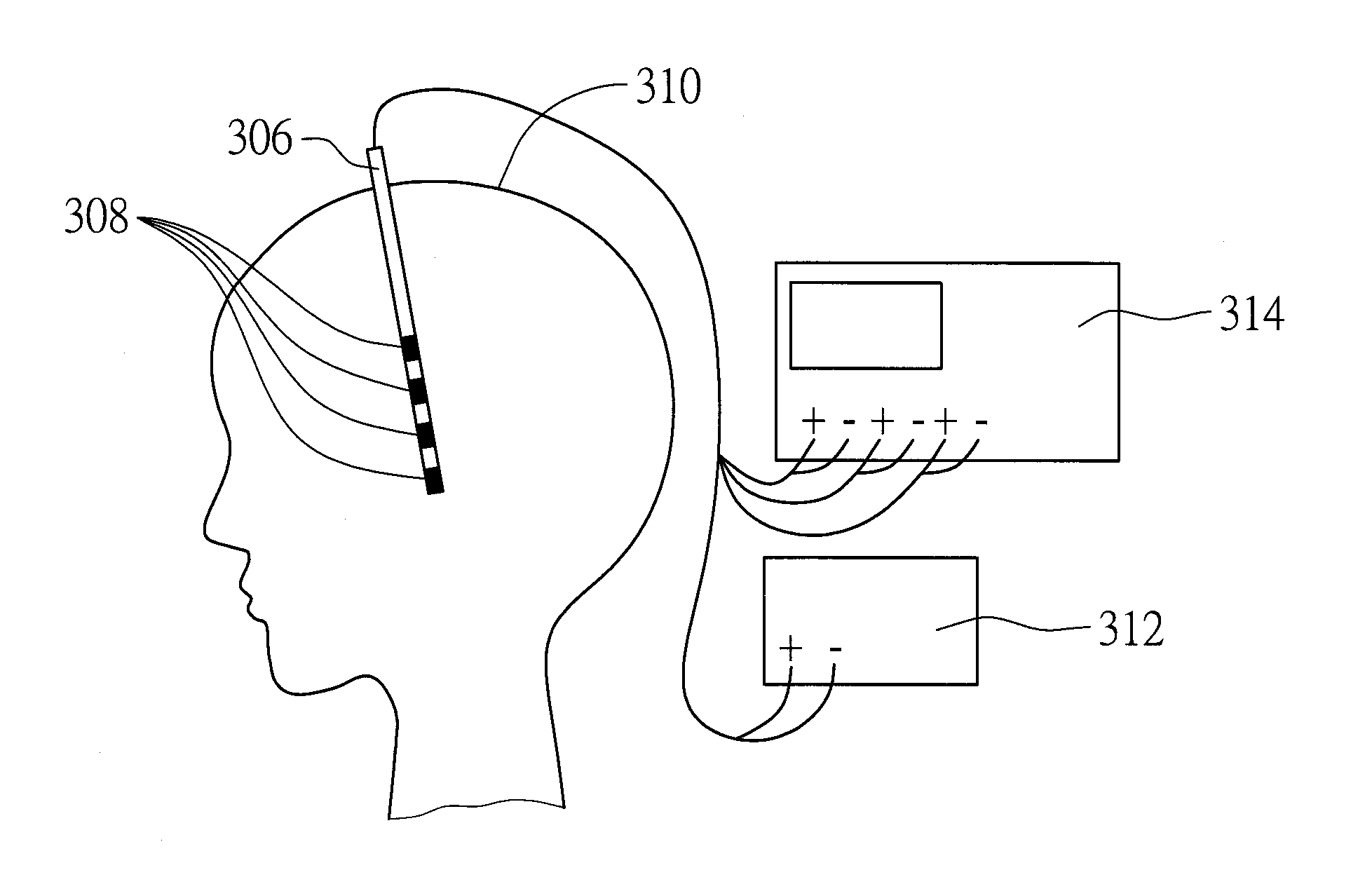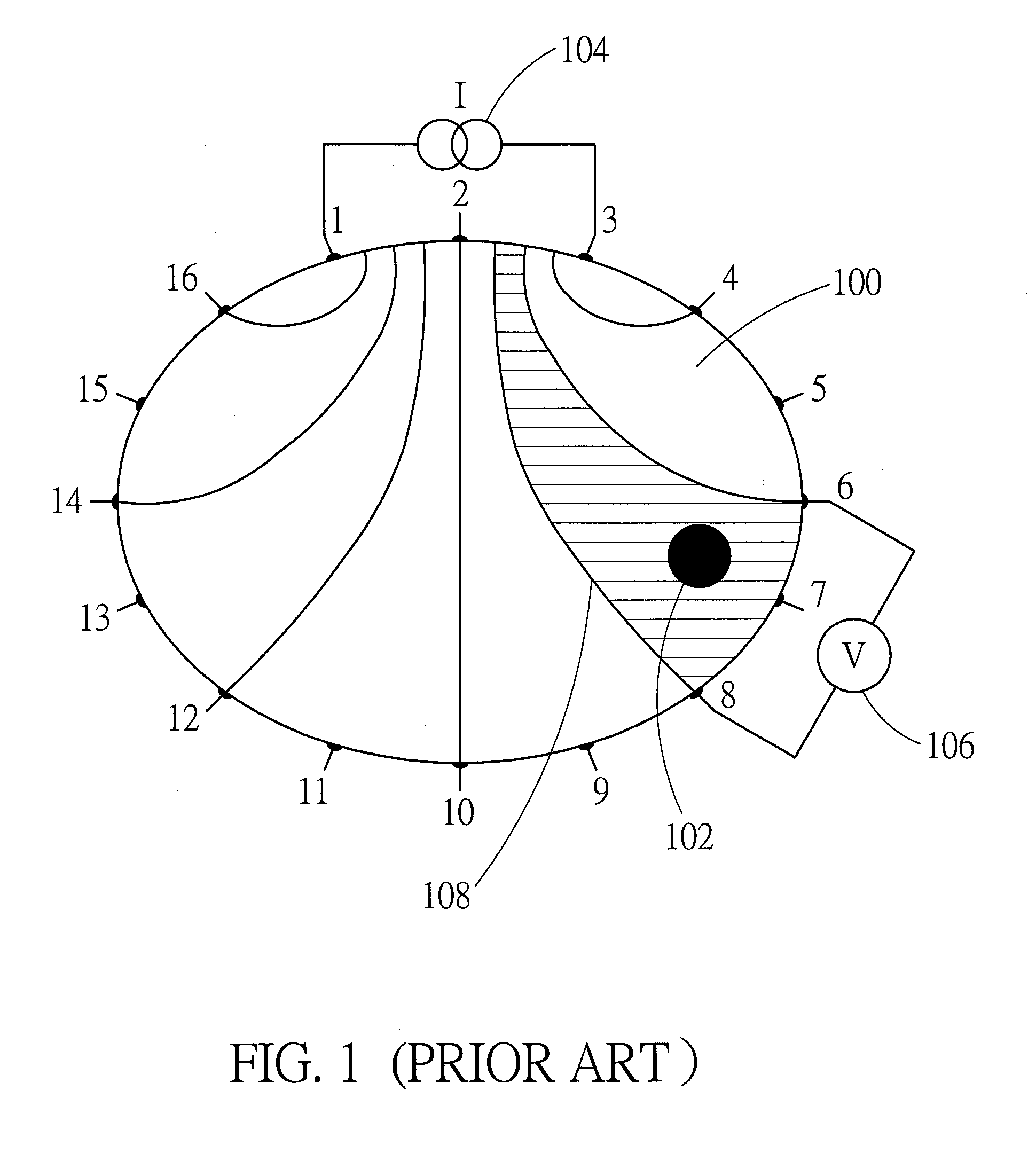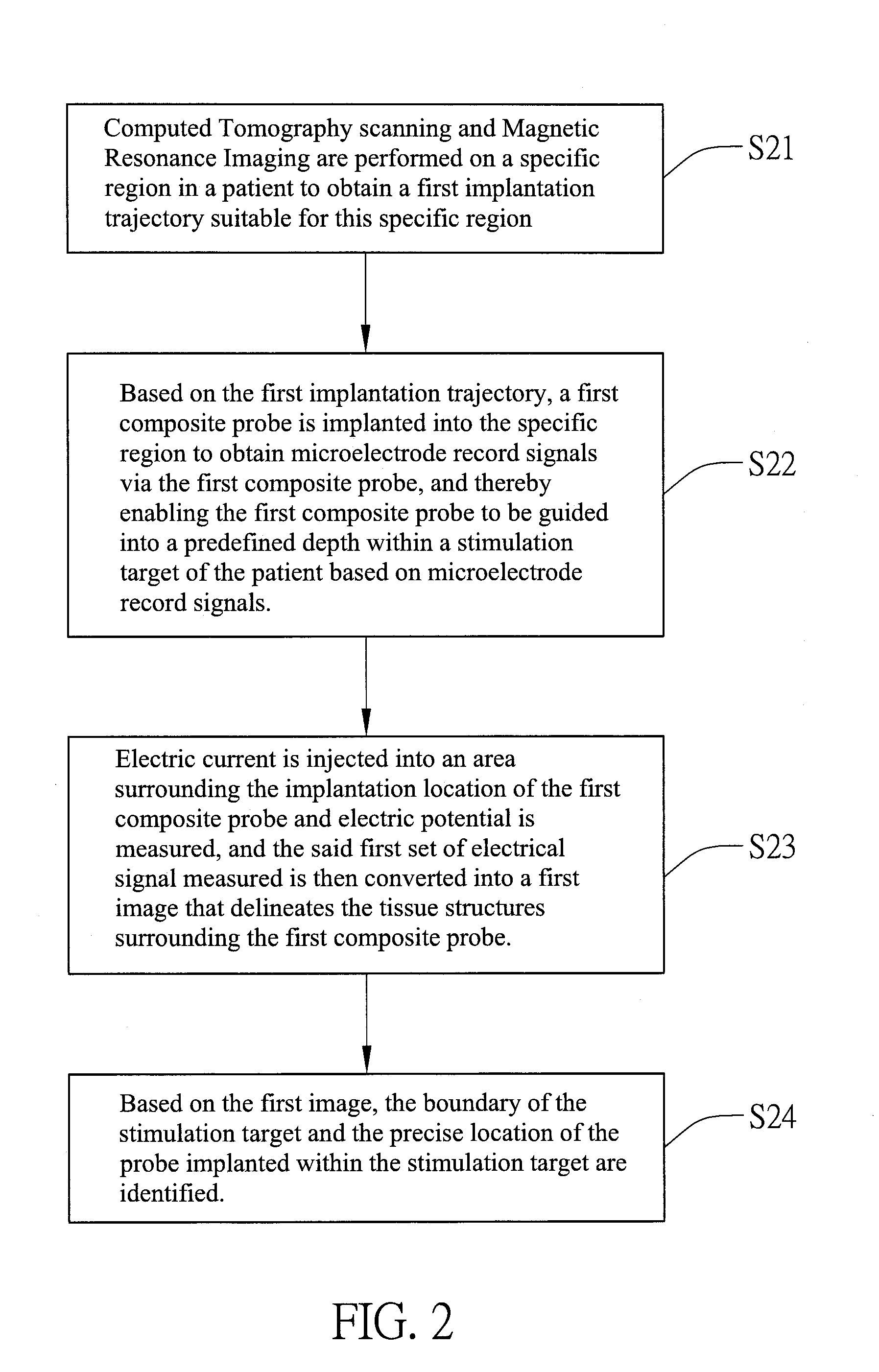Method for identifying stimulation target
a stimulation target and target technology, applied in the field of stimulation target identification, can solve the problems of “on-off” alternating reaction, affecting the normal life of patients, and affecting the quality of life, and achieve the effect of quick and efficient identification
- Summary
- Abstract
- Description
- Claims
- Application Information
AI Technical Summary
Benefits of technology
Problems solved by technology
Method used
Image
Examples
Embodiment Construction
[0019]The present invention is described by the following specific embodiments. Those with ordinary skills in the arts can readily understand the other advantages and functions of the present invention after reading the disclosure of this specification. The present invention can also be implemented with different embodiments. Various details described in this specification can be modified based on different viewpoints and applications without departing from the scope of the present invention.
[0020]The steps of method for identifying the stimulation target applicable to deep brain stimulation (DBS) according to an embodiment of the present invention are shown in FIG. 2.
[0021]As shown, in step S21, Computed Tomography (CT) scanning and Magnetic Resonance Imaging (MRI) are performed on a specific region in the patient to obtain a first implantation trajectory suitable for this specific region, then step S22 is performed.
[0022]In an embodiment of the present invention, step S21 can be i...
PUM
 Login to View More
Login to View More Abstract
Description
Claims
Application Information
 Login to View More
Login to View More - R&D
- Intellectual Property
- Life Sciences
- Materials
- Tech Scout
- Unparalleled Data Quality
- Higher Quality Content
- 60% Fewer Hallucinations
Browse by: Latest US Patents, China's latest patents, Technical Efficacy Thesaurus, Application Domain, Technology Topic, Popular Technical Reports.
© 2025 PatSnap. All rights reserved.Legal|Privacy policy|Modern Slavery Act Transparency Statement|Sitemap|About US| Contact US: help@patsnap.com



